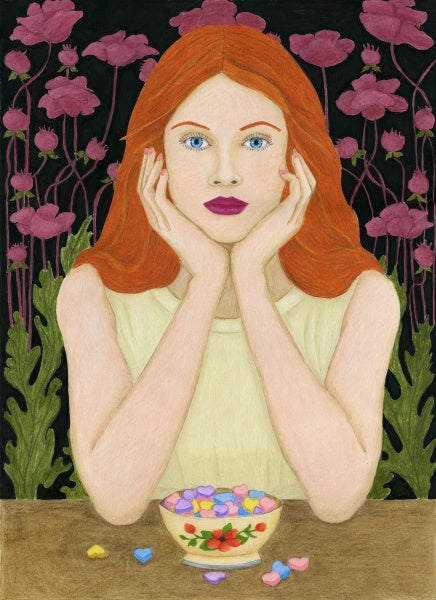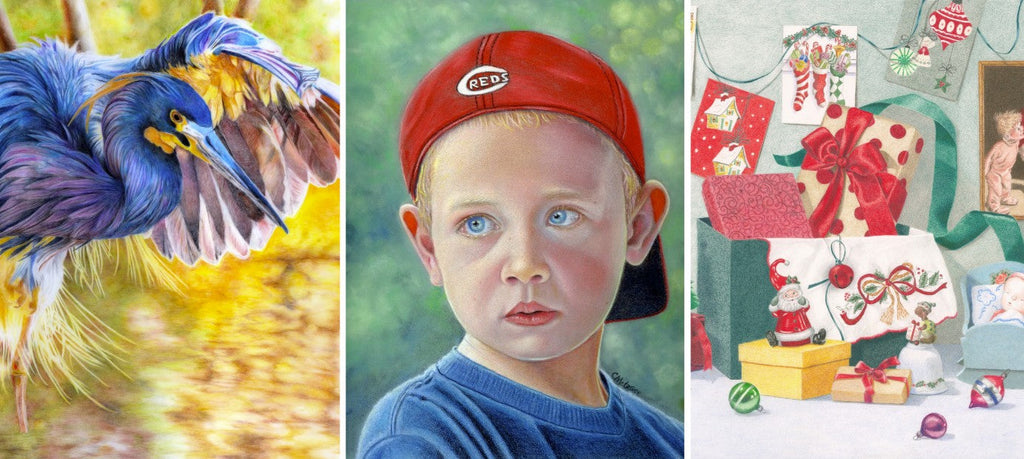Seeing With New Eyes
by Ann Holder
Maybe one of our most important tools that we use in our studios are our eyes. Have you ever thought about how wonderfully they’re made? We see light, darkness, and the vibrant colors around us. We see lines, shapes, forms, intricate details and perceived depths. Our eyes are drawn to motion as we take in the activity around us. Do we take a second glance? What draws us? We see emotions on a face: joy, wonder, goodness, pain, suffering, and anger. Eyes are a marvelous tool for the artist. We behold beauty, love, life, and even death. Perhaps that’s one reason why we do Art? To convey what’s on our hearts for others to “see?” This article explores a few ways that we can look at our artwork to gain insight for correcting or confirming the direction of our work.
"The Woman" From Luke 7:36-50
When I was in college, one of my art professors taught me how to view my work with new eyes. As I was developing a piece, he would occasionally have me hold it in front of a mirror to check it. In doing so, it gave me a chance to view my work, albeit backwards, from a different perspective. Areas that I thought were fine suddenly needed adjusting, tweaking, or refining. Or were, happily, just right!
Mirror View
Another aspect that I find helpful is to step away from my work. We can get so accustomed to looking at it up close, especially when we’re doing fine detail work, that we may miss something entirely. Similarly, after a long day at my desk, I’ve found I may need to leave my artwork alone for a while. I’ll do a load of laundry, make a snack, or go for a walk (my dog’s preferred choice). When I return, I can look at my work afresh. If you have the patience to set your work aside for a few days and then come back to it, that can also help. I look back now on pieces I’ve done six months ago or longer and now see ways to improve them. I feel like this is growth.
“Another aspect that I find helpful
is to step away from my work.”
Further, we can invite others to critique our work. We can ask questions as, “What do you like about this piece? What do you think could be improved?” This can sometimes be hard because it requires us to be vulnerable to another’s scrutiny. But is that necessarily a bad thing? We sometimes feel that it’s hard to be vulnerable, especially as an artist. I’m quite introverted, so asking is scary! But it’s those times that I feel that I grow the most. A close friend, spouse, or another artist may be helpful in giving good input. I know for myself and perhaps other artists, it’s an honor to be asked. There are many good Facebook group pages that are helpful as well. And you never know, maybe you’ll make a new friend in the process!
Twin View
Finally, photographing my work has benefited me in that I see a condensed version of my art. Occasionally I’ll compare that photo with the original side by side to see if anything else needs adjusting.
I have another, greater set of eyes that I turn to when I need help seeing better, too. And those are the eyes of the One who created the heavens and earth, and all that is in them. I marvel at His handiwork! Each creation is unique, special and different. Just like you and I! So I often ask Him to help me see with His eyes and with a new heart. As I am creating art, He is creating in me a new heart! Jesus gave His life to give us life… and eyes… and Art!
Happy seeing!
ANN HOLDER
Ann Holder is a Professional Photo Realism Artist in the beautiful mountains of North Carolina. As a realism artist, Ann strives to capture the emotion and unique characteristics of each of her subjects, enabling her to make them as “life-like” as possible. She realizes that paper and pencil can not compare to the One who makes the real, living, thing! She believes each of us is a one-of-a-kind Masterpiece.
Facebook: Ann Holder Art





Comments (1)
Thank you for your article. I found it helpful. A different point of view is always helpful. God Bless
Nancy Teliczan - Dec 17, 2023